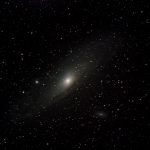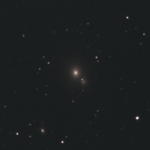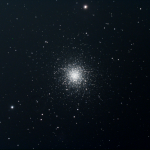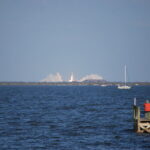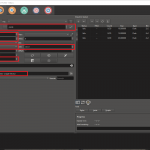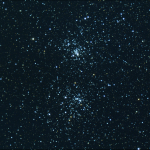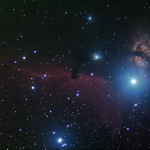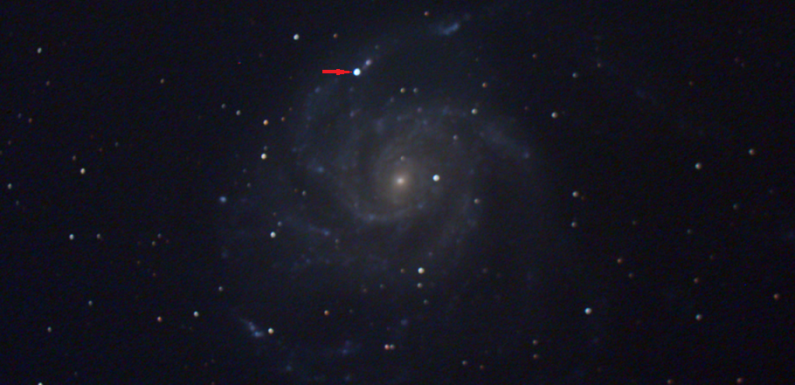
I have captured a couple supernovas in the past; one back in 2011 SN2011dh in M51, and a another one in NGC 4647 just over a year ago. Just this past Friday (05/19/2023) a Type II Supernova designated 2023ixf was discovered in M101. SN2023ixf was my target for this EAA session.
It was warm and clear with just a bit of haze. I barely let it get dark before I got started. I spent a few minutes in the Ekos focus module, but I just couldn’t seem to get it dialed in. Once I was as close to focus as I could get I ran the Ekos Polar Alignment routine. My polar alignment was spot on. I should of spent a little more time trying to get better focus, but it’s a school night and I was ready to get observing.
I had adjusted the the spacing between the Focal Reducer and the ZWO ASI 294MC Pro sensor to try to dial the focal length in to optimal. Plate solving calculated the focal length at 1215 mm (F/6.0), so I am still just a little off. I need to reduce the spacing between the FR and the camera sensor just a bit more. I’ll try replacing the 16.5 mm spacer with a 16 mm or 15 mm spacer to see if that will do it (Trying to get to 1272 mm f/6.3).
The EAA images in this post were capture with my ZWO ASI294MC Pro cooled to -10 C through my Celestron C8 SCT with a f/6.3 Focal Reducer. For guiding I am using the Orion Starshooter Autoguider (OSSAG) camera attached to my SVBONY SV106 60mm guide scope. All gear is mounted on a Sky Watcher EQ6-R Pro. The mount and cameras are remotely controlled with KStars/Ekos through INDI Server running on a Libre Computer SBC. The images were live stacked using SharpCap Pro. Images have been cropped or resized to the region of interest for file size, but otherwise appear just as I observed them.
Messier 101, the Pinwheel Galaxy, a face-on spiral galaxy about 21 million light years away in the constellation of Ursa Major. This is a live stack of 60 x 30 second exposures at 121 gain, 30 offset, and bin 2×2.
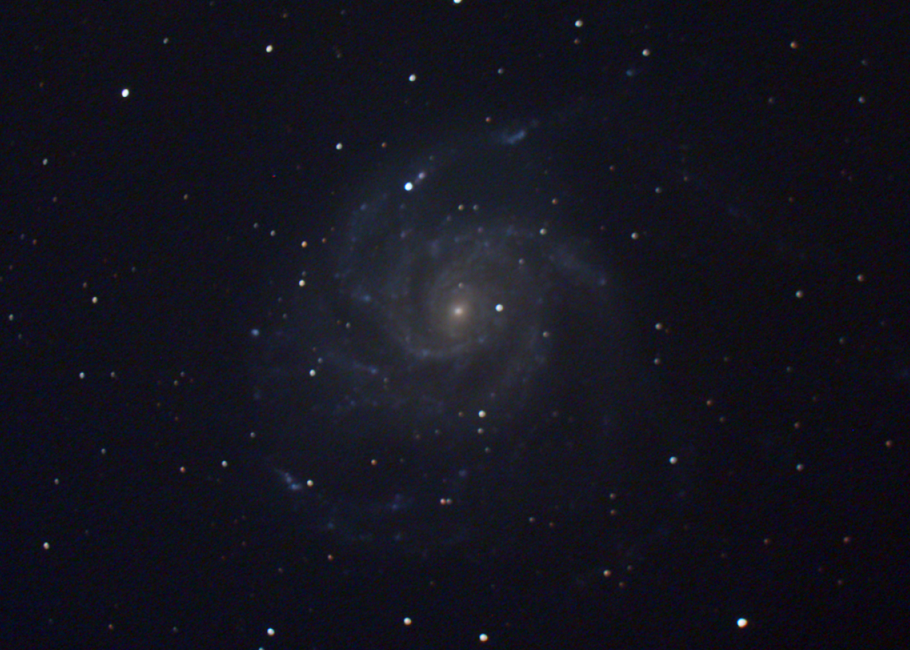
The supernova is VERY bright and could be easily resolved in the first 30 second exposure. Wish my focus was better 🙁 I captured M101 during my EAA observing session on 05/10/2023 and the supernova is not visible in that capture.
This is the same image with SN2023ixf annotated.
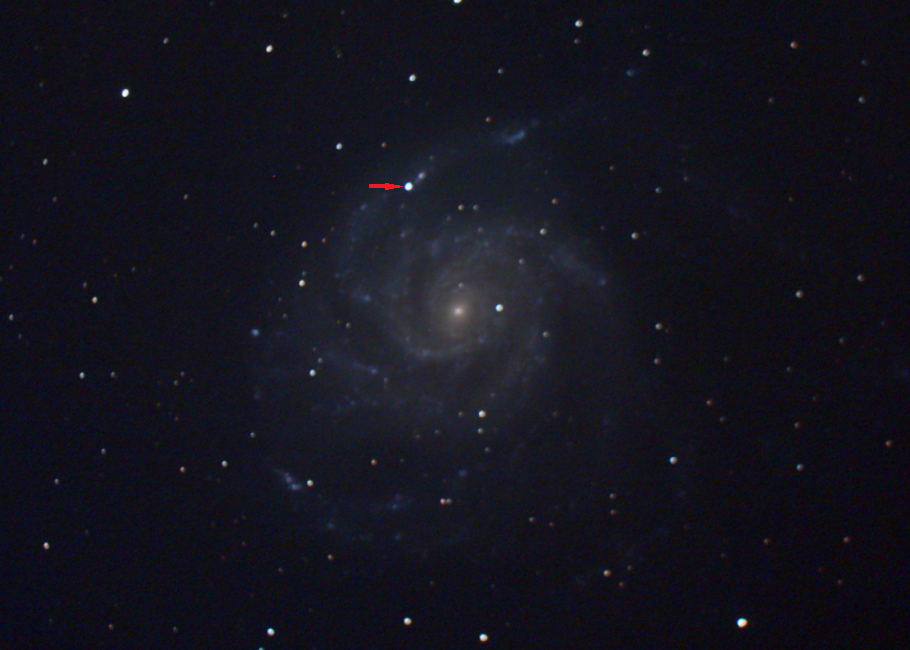
That star exploded last Friday… ~21 million years ago. Wow!
NGC5907/NGC5906 is a edge-on spiral galaxy in the constellation of Draco. The is a live stack of 30 x 30 second exposures at 121 gain, 30 offset, and bin 2×2.
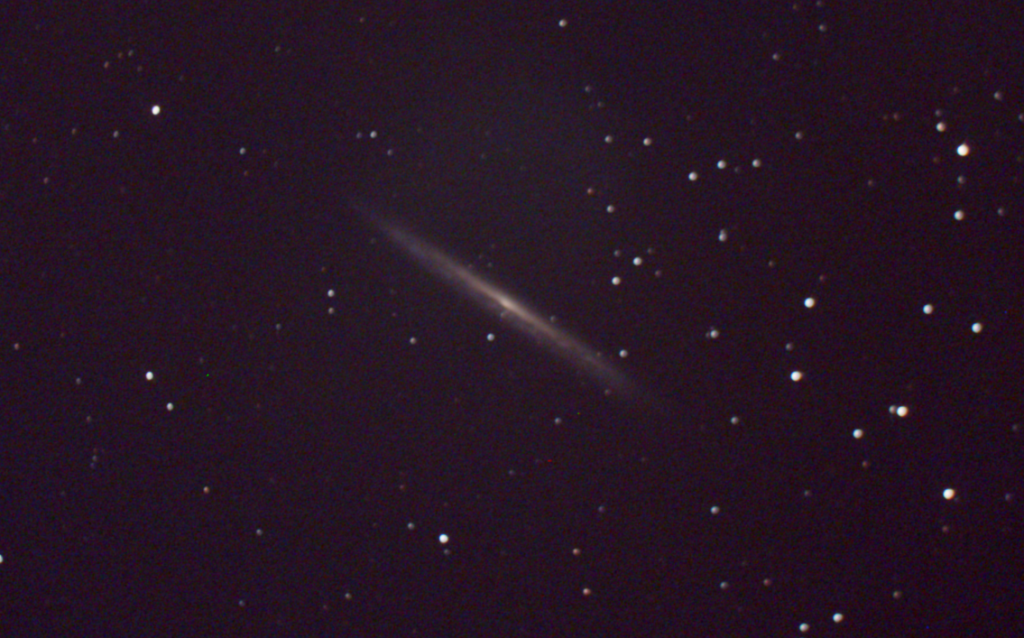
First visit to NGC5907. You can certainly see how bad my focus was in this capture. A nice looking edge-on galaxy, I’ll be back to have another look at it (with better focus) for sure.
Not a bad night. I should have spent more time getting in to focus but I accomplished what I set out to accomplish and that was to capture the supernova SN2023ixf in M101. I packed up just before 10:30 PM (school night). There was a thin layer of dew on just about everything, glad I had hooked up the dew heaters (I almost didn’t) so the glass was nice and dry.

